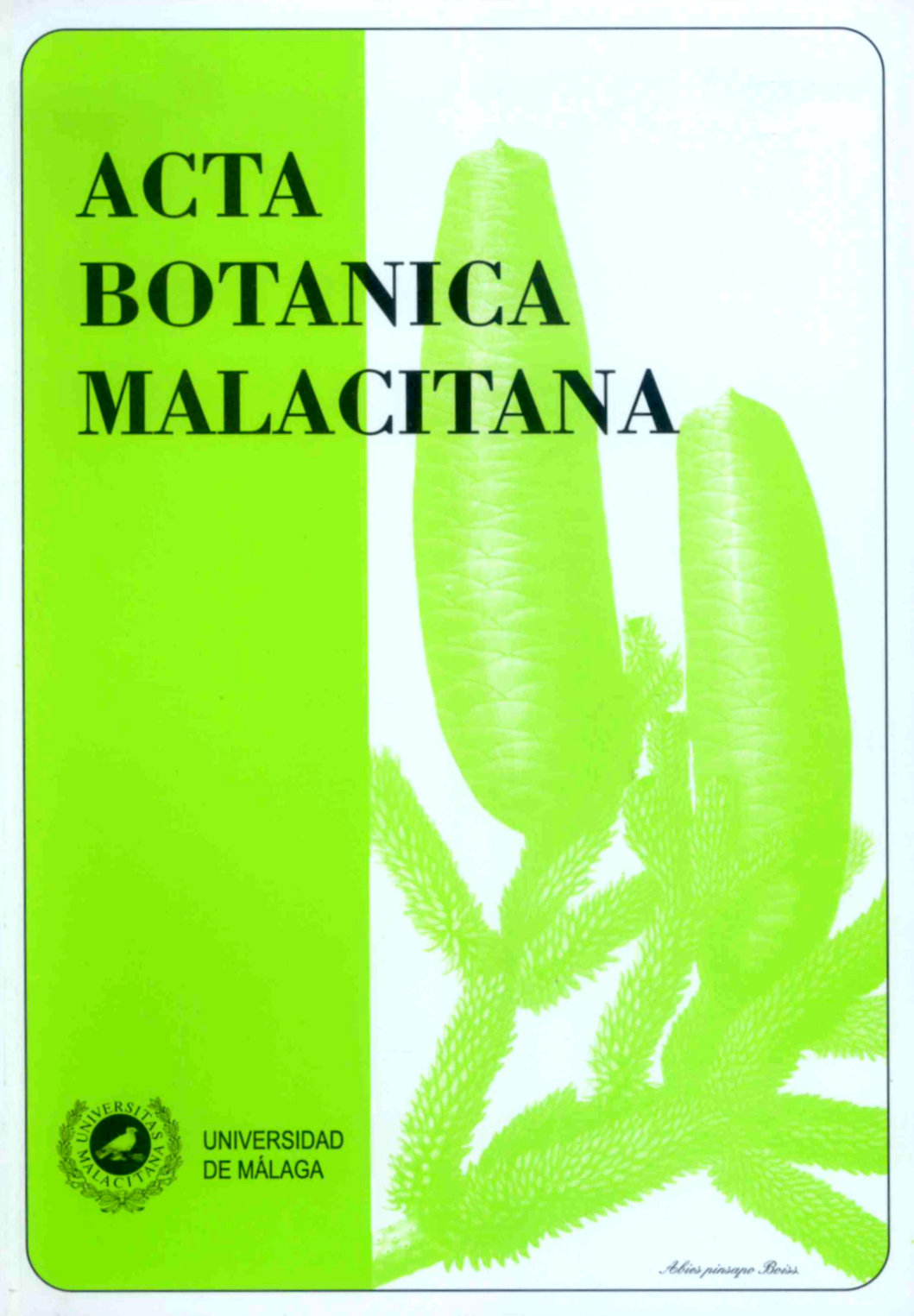Seed morphology of Calluna Salisb. (Ericaceae).
DOI:
https://doi.org/10.24310/abm.v29i0.7231Abstract
ABSTRACT. Seed morphology of Calluna Salisb. (Ericaceae). Seed morphology of Calluna vulgaris (L.) Hull, the only species of Calluna Salisb. (Ericaceae), was studied. Seeds were collected and stored under cold and dry conditions. SEM pictures were taken for whole seeds and details. Measures were made for different quantitative characters. A complete description is given. Seeds are tiny (0.55- 0.65 mm), ellipsoid and with a reticulated pattern for testa sculpture, with the hilum region transformed into a pore. This character clearly distinguish Calluna seeds from those of Erica.
Keywords. Testa sculpture, Calluna vulgaris, SEM pictures
RESUMEN. Morfología de semillas de Calluna Salisb. (Ericaceae). Se estudia la morfología de las semillas de Calluna vulgaris (L.) Hull, única especie de Calluna Salisb. (Ericaceae). Las semillas se recolectaron y almacenaron en condiciones de baja humedad y temperatura. Se realizaron fotos de microscopía electrónica de semillas completas y de detalle. Se realizaron medidas de diferentes caracteres cuantitativos . Se realiza una descripción completa. Las semillas son pequeñas (0.55-0.65 mm), elipsoidales y con una ornamentación de la testa reticulada. La región hilar se transforma en un poro, carácter que diferencia a Calluna del género próximo Erica.
Palabras clave: Ornamentación de la testa, Calluna vulgaris, fotografías de microscopía electrónica
Downloads
Metrics
Downloads
Published
How to Cite
Issue
Section
License
All information related to the licensing of published works in Acta Botanica Malacitana and copyright can be found in our Editorial Policy.







1.png)
